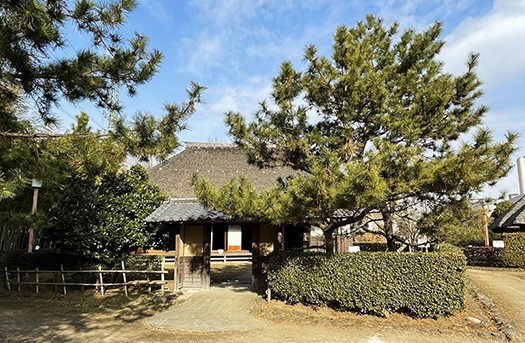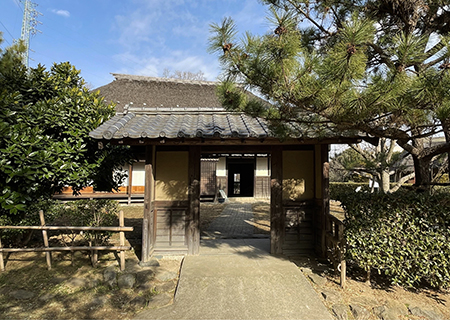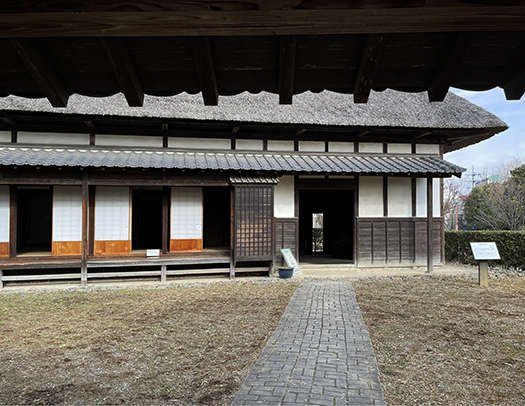


日本社会というのは本当に不思議な社会だと痛感する。先週末から一昨日まで東京・関東にいたのですが、実はSUICAカードを紛失してしまっていた(泣)。で、移動交通にさっそく支障が出るので善後処置としてすぐに紛失を届け出て、使えるSUICAを別途購入した。
けれどその紛失カードについて2日後さっそく顛末が解明された。わたしがある宗教施設参観時にポケットから小銭入れを出して賽銭として投入したときに、同じポケットに入れていたSUICAカードが落下して気付かなかったらしいのです。そのSUICAについて、わたしが札幌に帰還した翌日のきのう、最寄りの交番から電話連絡があって詳細をお知らせいただいた次第。<届け出たことで電話番号が判明もしたのでしょう。>
この面白い顛末についてはまだ進行中なので決着後、再度まとめてお知らせしたい。
なんですが、わたしの感動は「落とし物が発見されて届け出られる」日本社会の精神性・倫理性への驚きであります。よく言われているし、わたしも数回そういう経験をしているけれど、これは本当にすごい社会成熟度を表しているのか、それともまた別の国民性に由来するのか、不思議だと思う。
で、やはり日本に根付いた宗教性との関わりがやはり大きいと思えるのです。
神社信仰と仏教思想ということですが、島国という特殊環境の中でそういう精神性がほぼ純粋培養されて倫理感の均一性をもたらしてきているのではないか。そんな風に思われるのです。
八百万の神は日本の空気の中に普遍的に存在し、衆生救済のみほとけはあまねく人を救済する。神仏というように複数の宗教性を許容しながら、ひとびとの倫理感は極限まで高まっている。
今回取材対象にした住宅は浦和にある古民家園のなかの1軒ですが、この「旧野口家」は江戸期1649年に「社領10石」を拝領した記録が残っている大谷口氷川神社(武蔵一宮・氷川神社の同名末社)の「別当寺院」安楽寺住職の庫裡であった家なのだそうです。
神仏習合ということがごく自然にこの地域社会では継続されてきていた証のようです。
この家自体は寺の庫裏だけれど、同時に大谷口氷川神社の神職でもあった。野口家は1864年に安楽寺の住職になり、1871年に大谷口氷川神社の祀職となり当社は村社に列した。その後、明治初期の廃仏毀釈の流れの中で還俗して野口家になったと記録に残っている。
こういう神社であり仏教寺院でもあるという多神教世界として日本社会は熟成していた。一神教社会からは信じがたい「いい加減さ」と映るだろうけれど、しかし民のモラル意識は落とし物が多数届け出られるほどに非常に高い社会倫理を熟成させた。
日本人と宗教、そして倫理感をテーマにしながらこの野口家住宅をあす以降、見てみたい。
English version⬇
What is the Religious Reality of the Japanese People? Hikawa Shrine and Anrakuji Temple
Although there is no international comparison in terms of the rate of reporting lost and found items, the high level of “ethics” among the Japanese is remarkable. Let’s look into it from the perspective of Shinto/Buddhist syncretized houses. …
I am keenly aware that Japanese society is truly a strange society. I was in Tokyo and Kanto from last weekend to the day before yesterday, and actually lost my SUICA card (tears). So, as a precautionary measure, I immediately reported the loss and purchased a usable SUICA card separately, since it immediately interfered with my mobile transportation.
Two days later, however, the details of the lost card were quickly revealed to me. It seems that when I was visiting a religious facility, I took the coin purse out of my pocket and threw in some money, and the SUICA card I had in the same pocket fell out and I didn’t notice it. Yesterday, the day after I returned to Sapporo, I received a phone call from the local police box informing me of the details of the SUICA card. <I guess they found out my phone number when I reported the incident. >I am still working on this interesting story.
I would like to report the details of this interesting incident again after it is settled, as it is still in progress.
I am still in the process of finalizing the details of this interesting incident, so I will report it to you again after the case is settled. This is often said, and I have had this experience several times, but I wonder if this is an indication of a truly great level of social maturity, or if it stems from a different national character.
I think it has a lot to do with the religiosity that has taken root in Japan.
In the special environment of an island nation, such spirituality is almost purely cultivated and has brought about a uniform sense of ethics. It seems to me that this is the case.
The eight million deities are universally present in the Japanese air, and the mihotoke, the savior of all sentient beings, provides salvation for all. While allowing for multiple religions, such as Shintoism and Buddhism, people’s sense of ethics has been raised to the utmost limit.
The house we interviewed for this report is one of the houses in an old private house garden in Urawa. The “old Noguchi family” used to house the abbot of Anrakuji Temple, a “separate temple” of the Oyaguchi Hikawa Shrine, which has a record of having received “10 koku of shrine territory” in 1649 (the last shrine of the same name at Hikawa Shrine in Musashi Ichinomiya Shrine).
It seems to be a proof that the Shinto/Buddhist syncretism had been continued in this local community quite naturally.
Although the house itself is a kori (storehouse) of the temple, it was also a Shinto priest of the Oyaguchi Hikawa Shrine. In 1864, the Noguchi family became the head priest of Anrakuji Temple, and in 1871, they became the head priest of Oyaguchi Hikawa Shrine, and the company was listed as a village shrine. Later, during the movement to abolish Buddhism in the early Meiji period (1868-1912), the Noguchi family was returned to the priesthood and became the Noguchi family, according to records.
Japanese society had matured into a polytheistic world that was both a shrine and a Buddhist temple. Although this may seem unbelievably “lax” to a monotheistic society, the moral consciousness of the people has matured to such an extent that many lost and found items are reported to the authorities.
I would like to visit the Noguchi family residence in the morning and later on, while discussing the theme of Japanese people, religion, and ethics.
Posted on 7月 27th, 2023 by 三木 奎吾
Filed under: 住宅取材&ウラ話, 日本社会・文化研究







コメントを投稿
「※誹謗中傷や、悪意のある書き込み、営利目的などのコメントを防ぐために、投稿された全てのコメントは一時的に保留されますのでご了承ください。」
You must be logged in to post a comment.